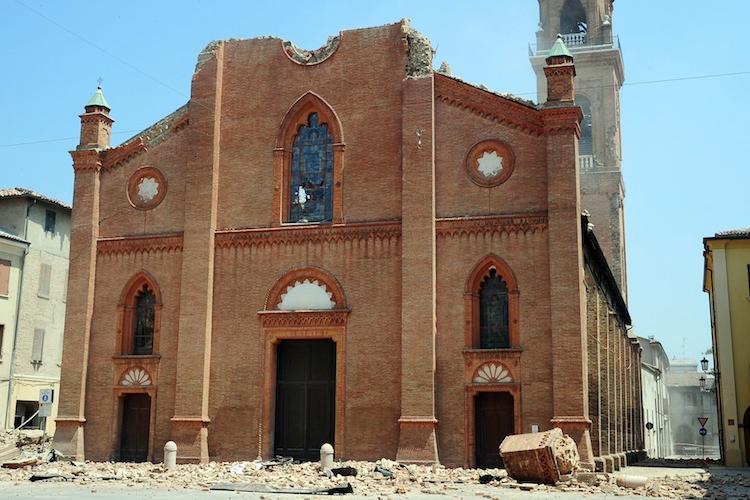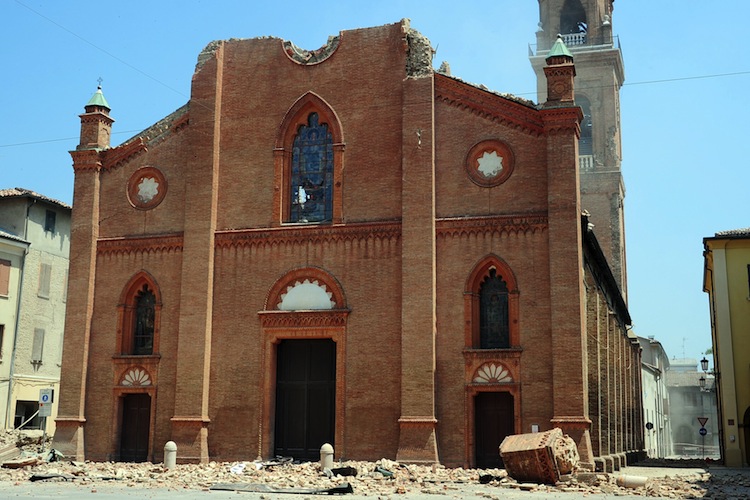MIRANDOLA, Italy–When the town of Mirandola in northern Italy was hit by a powerful earthquake last May, its historic center was devastated, delivering a heavy blow to the spirits of town residents.
Although newer homes and modern buildings also collapsed in the magnitude-5.8 quake that affected some 900,000 people across six provinces, in Mirandola like elsewhere, the focus for restoration was placed on its culturally rich old town—a town that reached its zenith of urban development in the 15th century.
After the earthquake and the weeks aftershocks, Mirandola’s city center was declared a red-zone and was completely fenced off, accessible only by special permit.
The once bustling streets were rendered empty and silent, shops closed, debris was scattered on the streets, and dislodged buildings showed cracks running from top to bottom.
It was not until last week, that the mayor declared the center accessible again, following months of hard work by firefighters to secure the area.
Speaking from his office, a middle school converted into a temporary town hall, Mayor Maino Benatti says he is eager to recover the town’s cultural heritage.
“This earthquake has tried to take away our identity—we will not allow this. We want to restore these situations or at least give a signal of recovery of our culture, our identity,” says Benatti.
Benatti says he now thinks about the future—about how to provide homes for all his residents in the winter and how to reopen the schools in the fall. Nonetheless, restoring the city’s identity, will give the city “courage and to have a future.”
Benatti proudly says that that the town of Mirandola is the city of Pico della Mirandola, from the Pico family, which was an important lordship in the Renaissance.
Tomaso Montanari, professor of modern history at the University Federico II of Naples, talks about the special role artistic heritage has in Italy.
Art and heritage play an important role in every day Italian life. According to Montanari, making a distinction between major and minor works of art is meaningless.
“If you walk in Piazza della Signoria in Florence, in Piazza del Campidoglio in Rome, in Piazza San Marco in Venice, but also in the infinite small squares of small villages or small towns … you understand that art is not made for museums, is not made to be separate from everyday life, but it is the shape of our daily lives.”
What moved Montanari most were the events that followed the earthquake, was what happened in the town of Pieve di Cento, located an hour’s drive from Mirandola. There, he said, the pieces of their historic church, shattered by the earthquake, were left in situ, and were not taken away to some warehouse because locals wouldn’t allow it.
“They couldn’t stand the fact that the artistic works would be separated from civilian life. Somehow in Italy the form of places has shaped the citizenship. We are citizens thanks to the city and thanks to their shape,” he said.
The Epoch Times publishes in 35 countries and in 19 languages. Subscribe to our e-newsletter.






